More than 120 years ago, Germany had a "flying ship" hanging high in the sky and it still exists and operates to this day.
When it comes to countries that must be visited when traveling to Europe, we certainly cannot ignore Germany. Known as the heart of this continent, according to a report on Wikipedia, as of 2017, Germany is the 9th most visited tourist destination in the world, with 37.4 million visitors. Of which, the capital Berlin is the 3rd most crowded destination in Europe.
This place has a full range of tourist destinations for all types of visitors, from natural landscapes, historical and cultural relics, unique seasonal festivals or shopping, entertainment and recreation complexes. Notable ones include the Cologne Cathedral, Brandenburger Tor, ancient castles and palaces or Europa Park, the second most popular resort and amusement park in Europe.
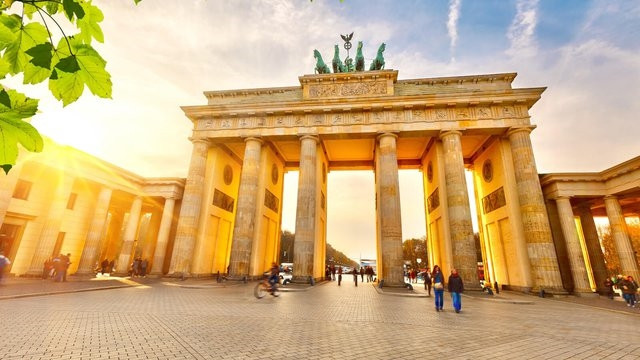
Germany tourism attracts the 9th most tourists in Europe.
However, there is a unique experience in Germany that not all tourists know. Taking the tram is common, but in Germany there is also a special type of tram, which is the suspension train, or the exact name is the Wuppertal suspension train.
Over 120 years old suspension railway
Wuppertal Tramway, full German name Schwebebahn Wuppertal, is a monorail railway for suspended trains, built in 1898 and first run in 1901. Up to now, this tramway has been up to 123 years old. Because it is located in the city of Wuppertal, Germany, the city's name is used as the name of this tramway.
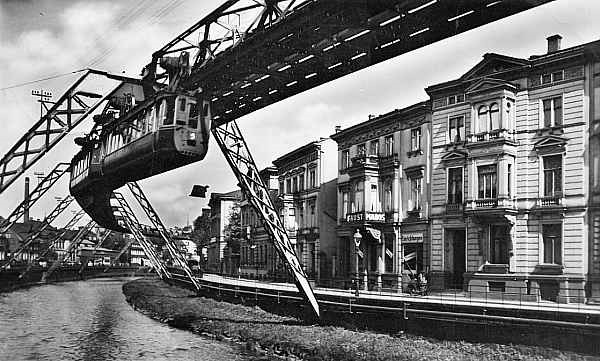
The Schwebebahn Wuppertal first operated in 1901, making it over 120 years old.
Although installed in the form of an upside-down suspension rail, the train running on this Wuppertal route still operates normally and extremely smoothly, similar to a funicular railway.
There are a total of 2 train cars, connected by a cable running around a tubular box, placed at the top of the slope. Each car will have a maximum capacity of 65 passengers and a maximum speed of about 15-20km/hour. The total length of the train is about 13.3km, connecting 20 train stations. However, it was later increased to 6 train cars with a frequency of 5 minutes/trip to serve the travel needs of the city's large population.
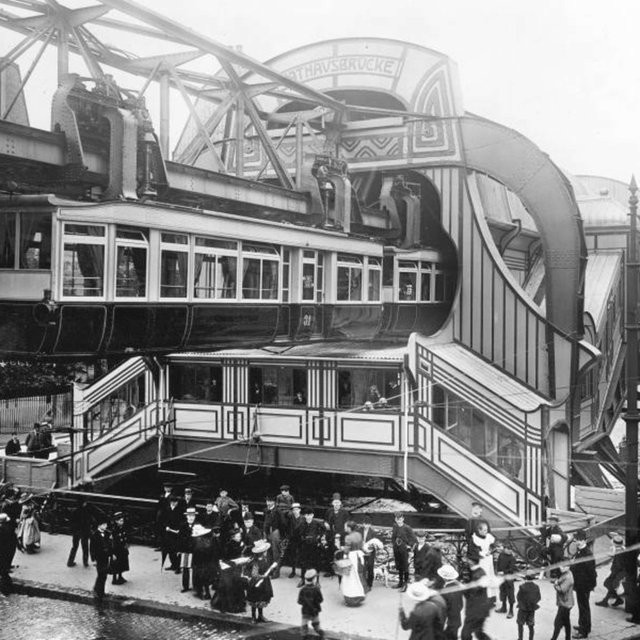
The bustle of the tram stations in the last century.
Over the past 120 years, including two world wars, the Wuppertal Tramway has remained virtually undamaged. According to CNN, in 1950, when the line was 50 years old, it even carried a circus elephant named Tuffi. Until 1999, the tramway was considered the safest form of public transport, with only a few minor incidents recorded in its nearly 100 years of operation.
Reasons for building unique suspension railway
Normally, we will see railways for trains running underground, either underground as subways, or recently as elevated railways. However, suspended railways like in Germany are a special case. Up to now, in the world, only Germany and Japan are the two countries that own this unique type of railway.
The reason for the construction of the suspension railway is that the winding valley terrain makes it difficult for traditional railways or trams to access. Therefore, architects and city officials have sought initiatives to solve the traffic problem in such areas.
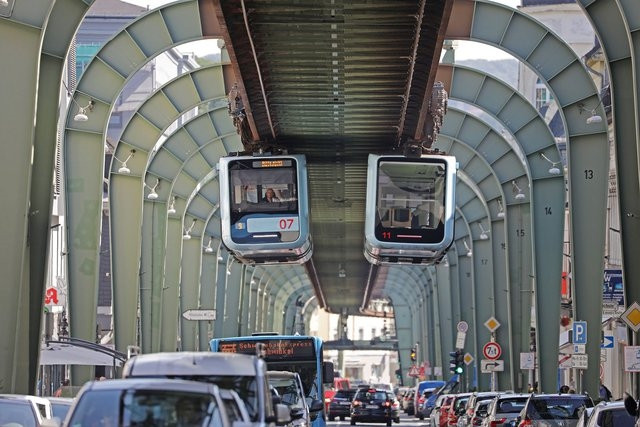
The Wuppertal Tramway still exists and operates today alongside other means of transport. (Photo by Oliver Berg)
Today, the Wuppertal Tramway still operates alongside other modes of transport and only carries people, no longer carrying elephants or other animals. According to many reports, it was used to transport around 25 million passengers per year before the pandemic.
The train line has also been gradually improved and upgraded to be safer and more secure, providing a better experience for customers, when its age has exceeded 100. In 2016, the old train cars were no longer available and were replaced by new, more modern train cars. In 2018, due to a railway collapse, Schwebebahn Wuppertal had to stop operating for nearly 9 months for renovation and repair. Finally, in 2019, it was reopened to welcome passengers.
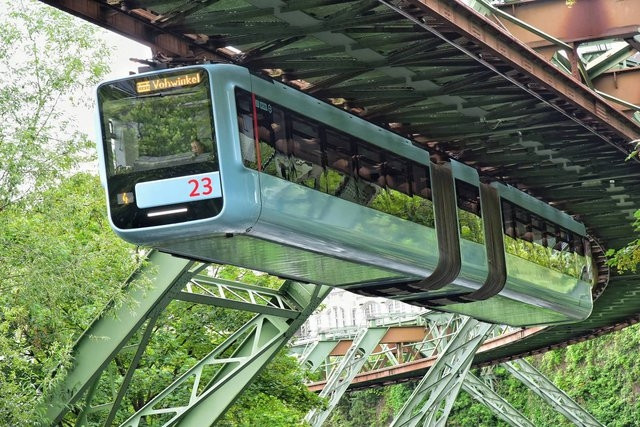
The old train cars have been replaced with new, more modern versions.
Another German city that has a monorail is Dresen, located more than 500km from Wuppertal. Japan also has a number of monorails, including the Shonan Monorail in Kamakura. It has a total length of 15.2km with 2 tracks and 18 carriages.
The experience of riding the funicular will certainly be an unforgettable experience for visitors to Germany. Throughout the journey, visitors will slowly pass through ancient buildings in the city, looking out at the slowly passing natural scenery... If you have the opportunity to visit the "heart of Europe" in general or the city of Wuppertal in particular, you should definitely not miss this experience.
According to Fatherland